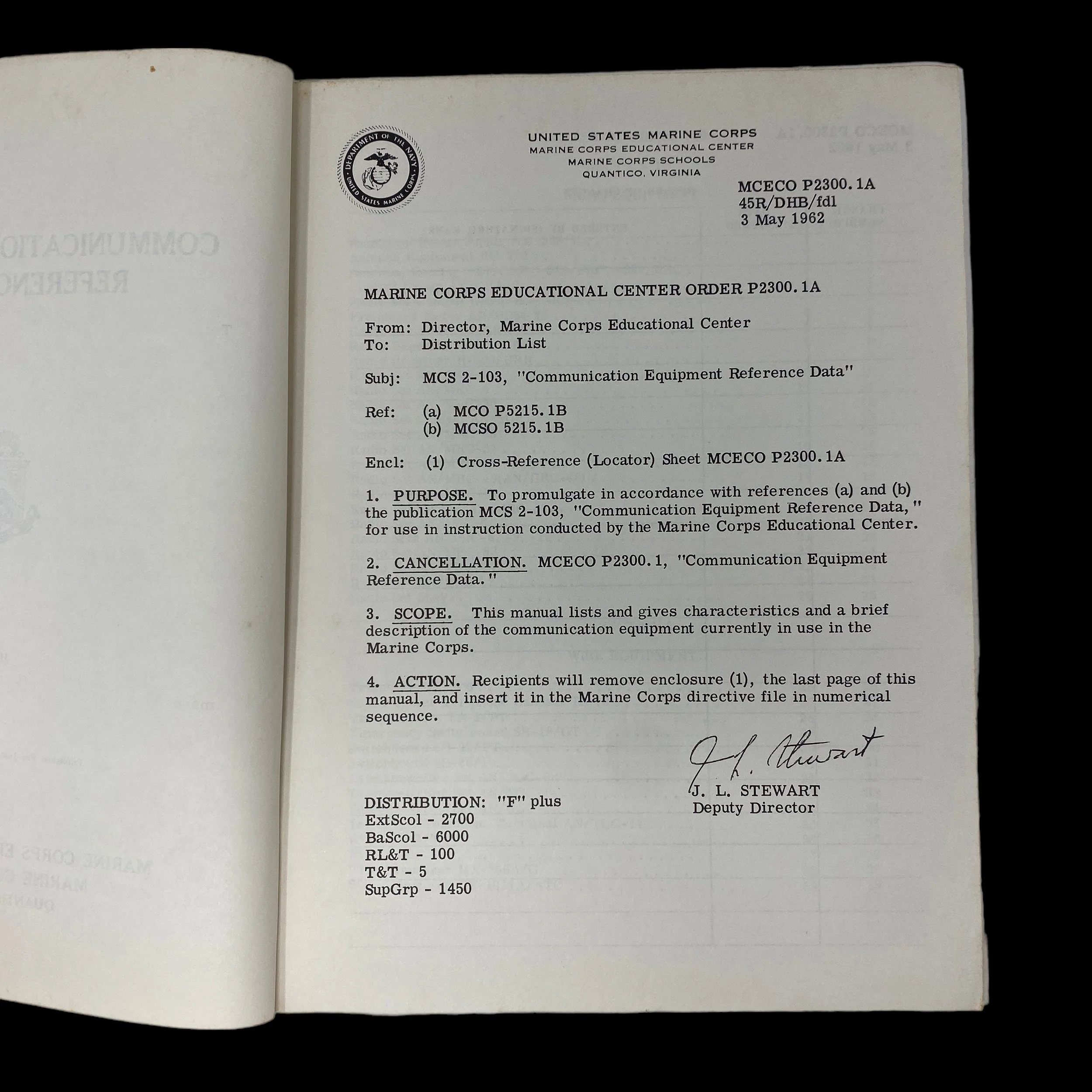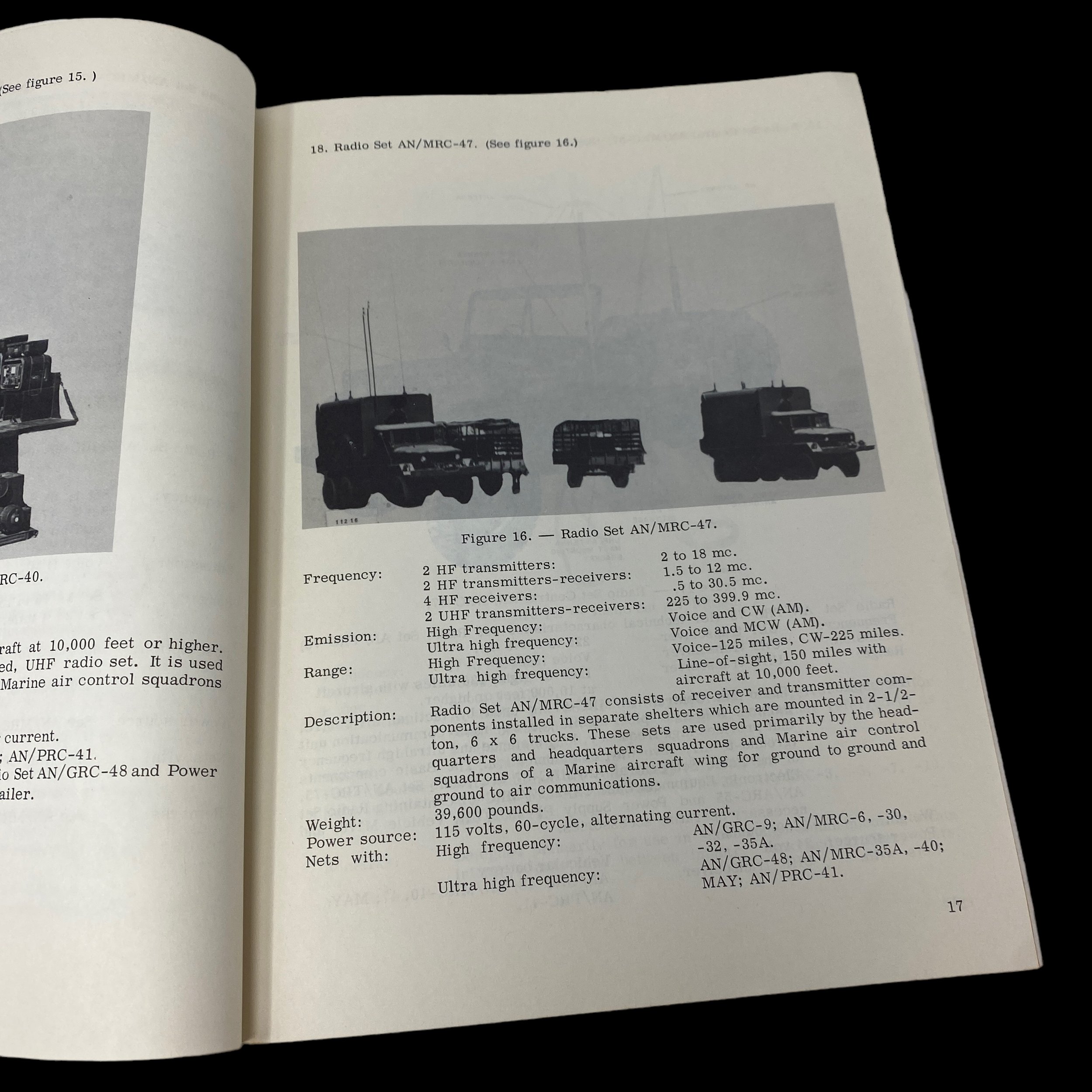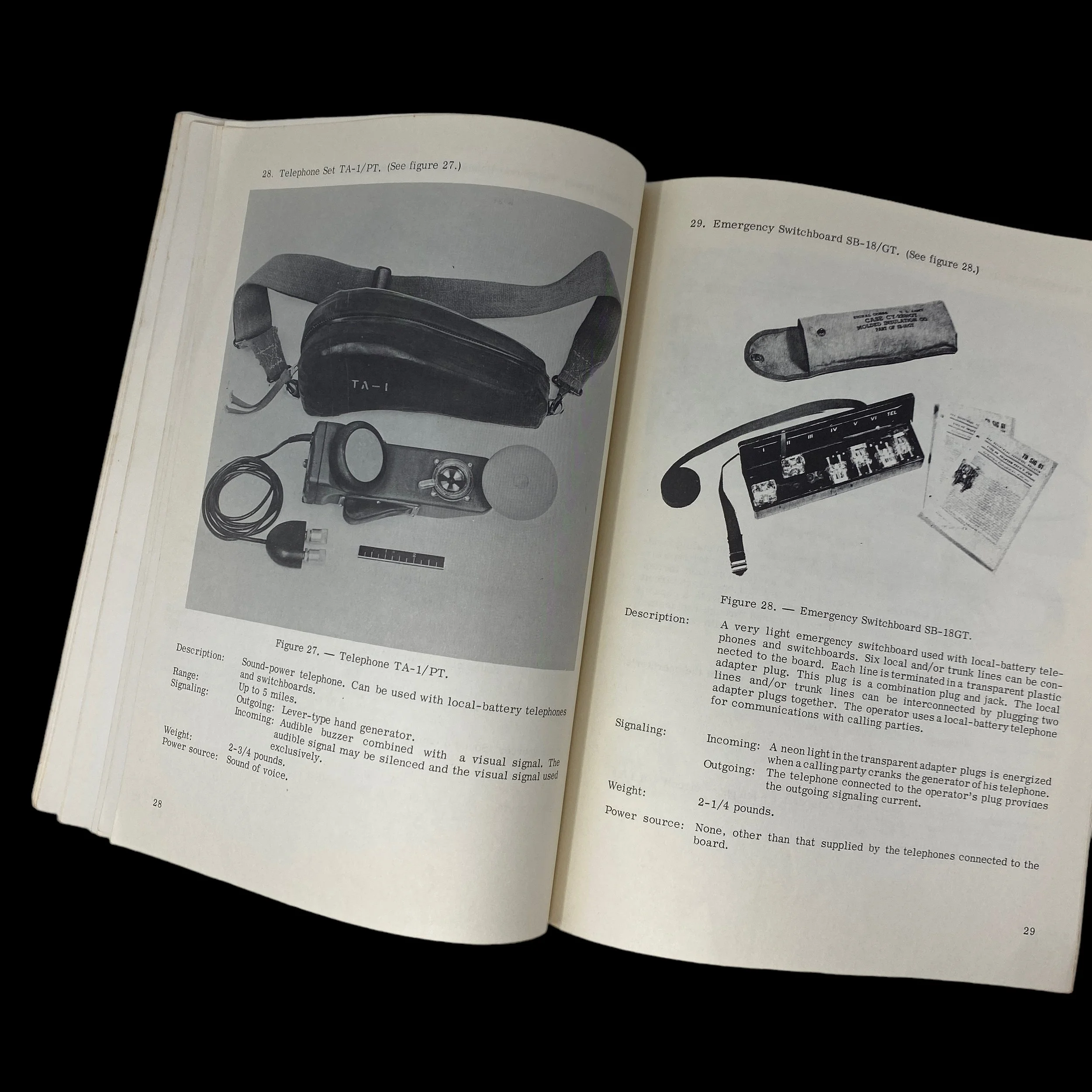RARE! 1962 Vietnam War “COMMUNICATION EQUIPMENT” MARINE CORPS SCHOOL Quantico Virginia Training Manual (Radios and Wires)*

















RARE! 1962 Vietnam War “COMMUNICATION EQUIPMENT” MARINE CORPS SCHOOL Quantico Virginia Training Manual (Radios and Wires)*
Comes with a hand-signed C.O.A.
This rare and museum-grade Vietnam War artifact was used at the infamous MARINE CORPS SCHOOL at Quantico, Virginia to train US Marines on “COMMUNICATIONS EQUIPMENT”. Dated 1962 this extremely detailed Vietnam War manual was produced in very limited quantities and was used to teach about…power supplies, antenna, equipment, radio controls, radio, receivers, radio sets, switch boards, telephones, and wire dispensers used in combat. This is an extremely detailed document detailing some of the most confidential information for teaching US Marines about the comms they would see on the battlefield.
The Vietnam War, spanning from 1955 to 1975, was a conflict characterized by its complex terrain, jungle warfare, and guerilla tactics. To effectively combat the Viet Cong and North Vietnamese forces in this challenging environment, the United States armed forces relied heavily on advanced communication technology, which played a pivotal role in coordinating operations, gathering intelligence, and maintaining troop morale.
Communication in the Vietnam War
Effective communication was essential for the U.S. military during the Vietnam War due to the vast and often unforgiving terrain. The jungles, mountains, and swamps made traditional forms of communication, such as signal flags and messengers, inadequate. Thus, the development and deployment of advanced communication equipment became a top priority for the U.S. military.
Power Supplies
Power supplies were the lifeblood of communication equipment during the Vietnam War. Portable generators and batteries provided the necessary electrical power for radios, field telephones, and other devices. These power supplies were designed to be lightweight and portable, allowing soldiers to set up communication stations quickly, even in remote areas. The advent of reliable power supplies greatly improved the mobility and flexibility of communication networks.
Antenna Equipment
Antenna equipment was crucial for extending the range of radios and ensuring clear communication in the challenging Vietnamese terrain. During the war, soldiers used various types of antennas, including whip antennas and directional antennas. These antennas allowed for better signal reception and transmission, making it easier for units to communicate with each other and with command centers.
Radio Controls
Radio controls were essential for tuning, adjusting, and monitoring radio frequencies. Soldiers operating radios needed to be proficient in using these controls to ensure effective communication. Tuning the radio to the correct frequency was critical, as interference or jamming could disrupt communications. Radio controls also allowed for encryption and decryption of messages, ensuring the security of sensitive information.
Radio Sets
Radio sets were the backbone of communication in the Vietnam War. The U.S. military deployed a variety of radio sets, including the AN/PRC-25 and AN/PRC-77, which were portable, rugged, and reliable. These radios allowed soldiers to communicate over long distances, providing a lifeline for units operating in isolated areas. The radios were often equipped with voice encryption technology to protect classified information from falling into enemy hands.
Switchboards
Switchboards played a critical role in establishing communication networks at base camps and command centers. These manual or automatic switchboards allowed operators to connect calls, route messages, and manage incoming and outgoing communication traffic efficiently. Switchboard operators were highly trained to handle the demands of wartime communication.
Telephones
Field telephones were another vital tool for communication during the Vietnam War. These rugged devices allowed soldiers to establish reliable point-to-point communication within their units. Field telephones were particularly valuable for maintaining communication in situations where radio signals might be jammed or intercepted. They were also essential for coordinating artillery fire support.
Wire Dispensers
Wire dispensers were used to lay communication wire, connecting various points within a base camp or along the frontlines. Field wire was used for secure and reliable communication, especially in situations where radios might be compromised. Wire dispensers were designed to be portable and easy to set up, allowing soldiers to quickly establish wired communication lines.
The Vietnam War was a conflict that tested the limits of communication technology at the time. The U.S. military's investment in power supplies, antenna equipment, radio controls, receivers, radio sets, switchboards, telephones, and wire dispensers significantly improved its ability to operate in the challenging environment of Vietnam. These advancements in communication technology played a crucial role in the military's ability to respond to the unique challenges of the conflict and contributed to the eventual withdrawal of U.S. forces. The lessons learned from Vietnam continue to shape military communication strategies and technologies to this day.